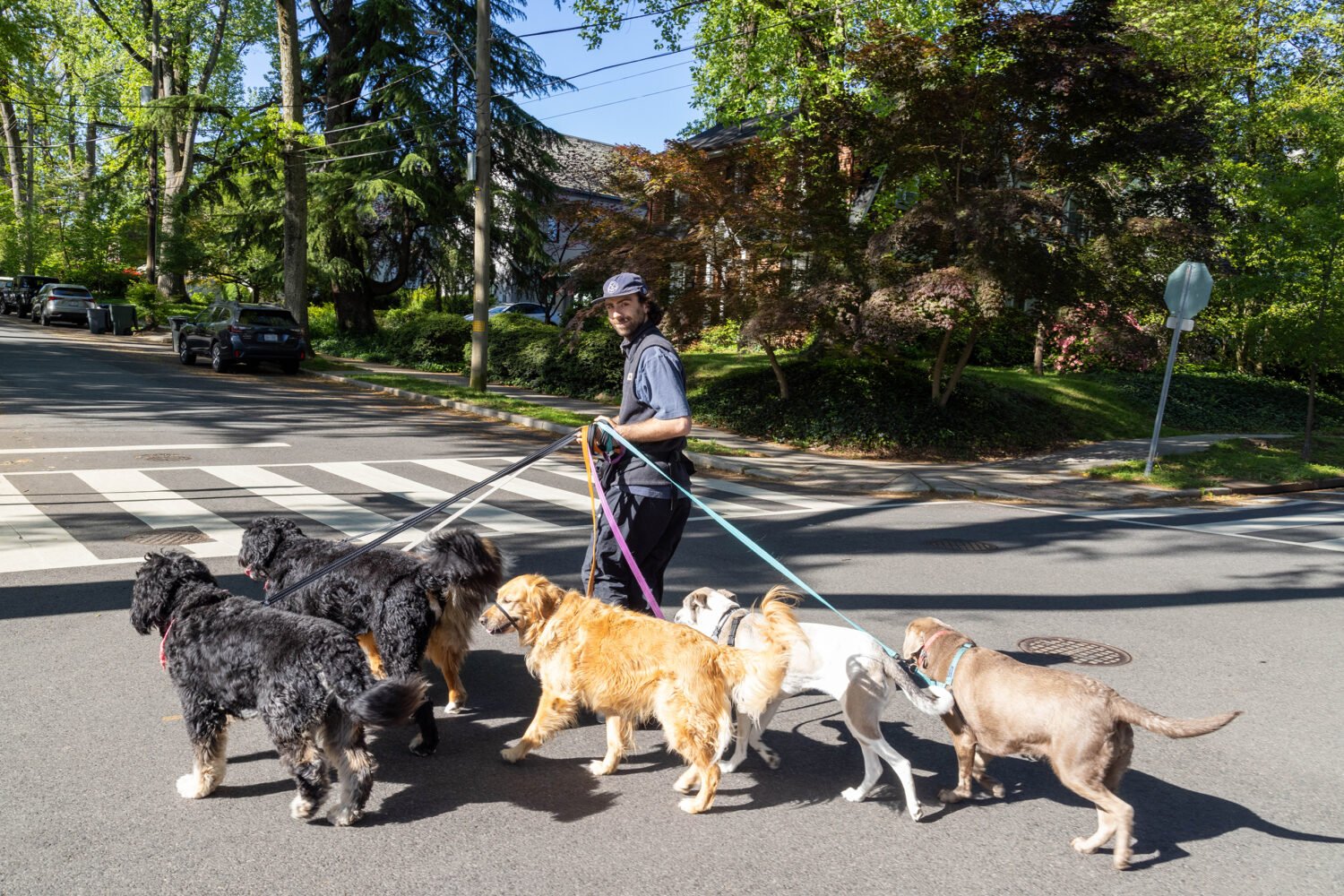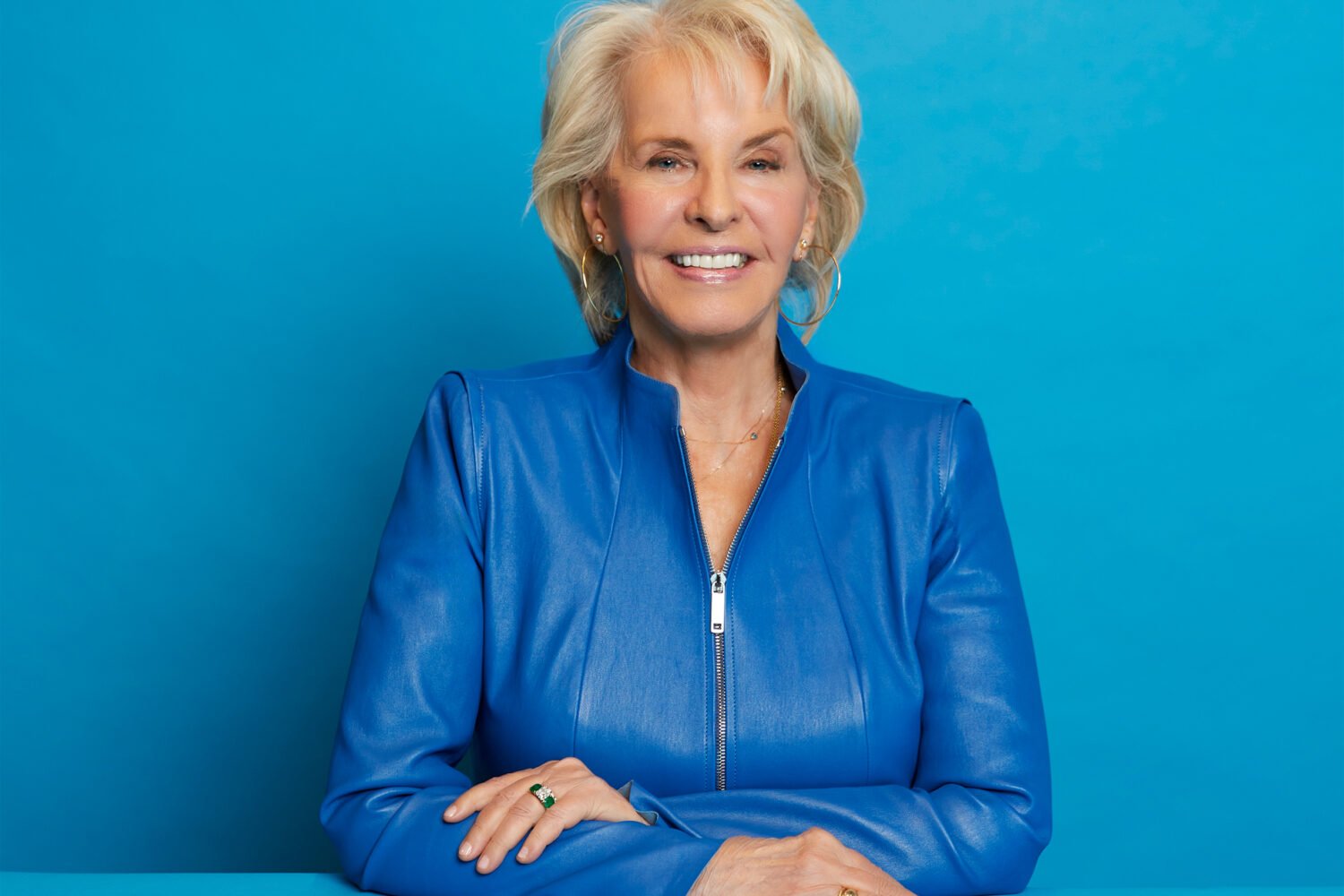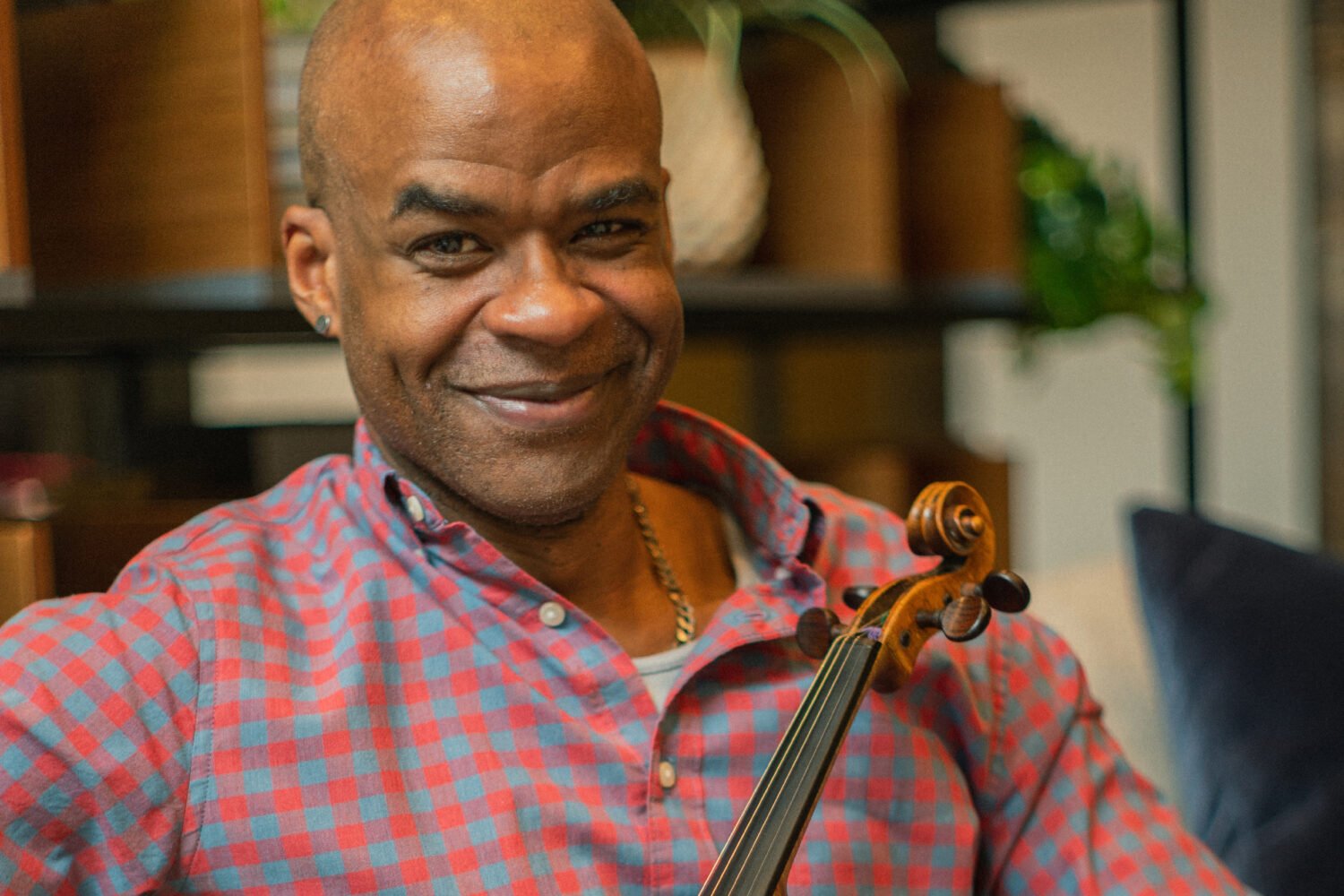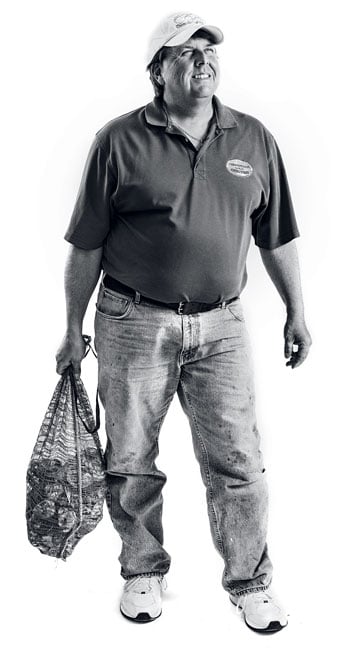
For Johnny Shockley, a lifelong resident of Maryland’s Eastern
Shore, working the water has always been more than a job.
“It was my first love,” he says. “My father was a waterman, and
his father was a waterman. In my view, there was nothing else that would
ever top being a commercial fisherman.”
Shockley, 50, spent his schoolboy summers working on his
father’s boat in the late 1960s and early ’70s, when there was still a
good life to be had as a waterman. But disease, pollution, overfishing,
and extreme weather have taken a grave toll.
In the late 1800s, when the so-called oyster wars raged, as
many as 15 million bushels of the bivalve were pulled from Maryland waters
each year. Today 99 percent of the state’s wild oysters are gone, and
annual harvests have dipped below 100,000 bushels multiple times in the
last decade.
Regulators have responded with increasingly tough rules, and it
was a longing for freedom from these restrictions that led Shockley to
look for a way to remain on the water without being shackled to the
declining profit margins and frustrating legal battles of the public
fishery.
Three years ago, inspiration struck—he’d grow his own oysters
rather than relying on what the bay could provide—and Hooper’s Island
Oyster Aquaculture Company was born. Today Shockley isn’t just a
practitioner of aquaculture; he’s an evangelist.
While traveling to spread the word of oyster farming this
spring, Shockley called me from the Atlanta airport, ebullient at the
reception he’d received along the Gulf Coast. “It’s a new revolution
around producing oysters,” he said. “It’s such a cool thing for the bay
environmentally and economically.”
• • •
On a crisp afternoon this spring, I drive across the Bay Bridge
to visit Shockley on Hooper’s Island, a chain of three islets about 20
miles southwest of Blackwater National Wildlife Refuge. Along the way, I
pass forgotten boats sitting in tall patches of grass, the way rusted-out
trucks dot other rural areas, and the local volunteer fire
department—advertising an upcoming chicken-and-muskrat dinner—before
reaching the company’s headquarters beside the Honga River.
As we walk along the water’s edge, Shockley explains that for
decades the oyster was Maryland’s primary seafood catch and the economic
linchpin for the state’s watermen: “That’s what the entire seafood
industry in the state started upon.”
Early on, massive harvests began decimating natural reefs and
slowed down reproduction. Then, beginning in the 1950s, two diseases—known
as dermo and MSX—appeared in the bay. During the mid-1980s, droughts and
high temperatures spread the diseases, which proved far more disastrous to
the industry than pollution or overfishing.
While oysters declined, the blue crab became Maryland’s
signature seafood, as “Maryland-style” crab cakes cropped up on menus
around the country.
“What we’re doing,” Shockley says of his company, which he
cofounded with business partner Ricky Fitzhugh, “is reinventing the oyster
industry to try to help reestablish the oyster as the king-pin
economically.”
Aquaculture can refer to the farming of almost any type of
seafood. Oyster farming is a particularly sustainable subset because
oysters are filter feeders, removing excess algae and sediment from the
water. (Researchers think that the bay’s oysters once filtered the estuary
every three to four days; with today’s diminished population, it would
take a year.)
Oyster farmers raise larvae in fiberglass tanks, called
upwellers and downwellers, until they’re large enough to go into wire
cages and be set on leased land at the bottom of the bay. The general
process isn’t new—oyster farming has been documented as far back as
ancient Rome.
Beyond a metal door labeled algae room, Shockley swirls the
water in a glass beaker in which millions of tiny plankton are
multiplying. Water tanks, carbon-dioxide containers, carboys, and a
microscope fill the room.
Chesapeake Gold oysters, as Shockley’s are called, are
triploids, a variety of Crassostrea virginica—Eastern oysters—created
through genetic manipulation in the late 1970s to be meatier, more
disease-resistant, and faster-growing than their wild counterparts.
Because they don’t spawn, triploids can be harvested throughout the
summer, defying traditional admonitions to eat oysters only in months that
contain the letter “r.”
And aquaculture helps solve another problem facing watermen,
Shockley says: Oyster farmers can compensate for smaller harvests by
providing attractive, consistent, branded bivalves that restaurants can
serve on the half shell for a premium. Wild oysters harvested from the bay
command just a few cents each: A bushel containing 250 went for about $29
this past season, or about 11 cents each, according to Michael Naylor,
shellfish program director for Maryland’s Department of Natural Resources.
Shockley’s oysters, on the other hand, command about 60 cents
apiece.
He’s not the only one seeing the potential in oyster farms.
Along the East Coast, cultured oysters took in more than $44 million in
2012, says Bob Rheault, executive director of the East Coast Shellfish
Growers Association. In Virginia, which has a long history of supporting
aquaculture, the state’s growers sold about 28 million oysters, for an
estimated revenue of $9.5 million last year—$3 million more than in
2011.
In Maryland, the industry was inhibited by red tape until 2009,
when new oyster guidelines freed space for aquaculture and streamlined the
licensing process. A handful of companies were already in the game—the
Choptank Oyster Company, which produces a variety called Choptank Sweets,
was an early champion—but the guidelines led to an explosion of
entrepreneurs ready to try their hand at the business. According to
Naylor, Maryland has 87 new aquaculture leases pending.
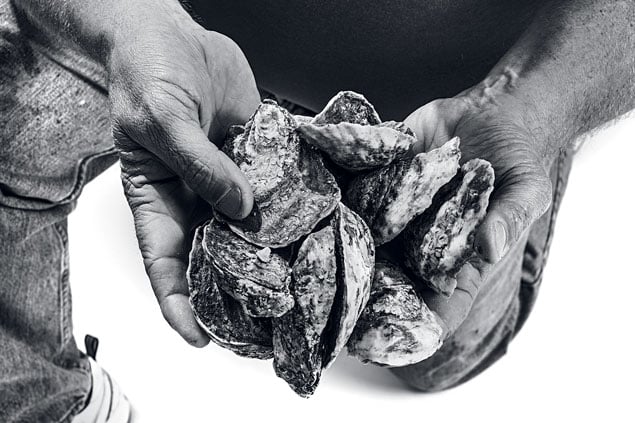
Shockley isn’t just interested in growing his own oysters—he
wants to help other Marylanders do the same. When he became interested in
aquaculture, he investigated machinery and techniques used by labs and
research facilities. He believed the methods could be streamlined for
commercial purposes and began creating customized machinery that could be
used on his workboat. He now sells the nursery equipment, including
upwellers, downwellers, and huge cylindrical sorters that can quickly
divide oysters by size as they develop.
Shockley doesn’t fear competition. He sees an increase in
high-quality cultured oysters from Maryland as a way to boost the
reputation of all. “The more oysters we sell,” he says, easing into a
broad grin, “the more oysters we sell.” During a short harvesting season
beginning last September, the company took in about 100,000 oysters; he
hopes to take in 1½ to 2 million this year.
But how could even a booming mollusk market absorb such
abundance? As wild-oyster harvest rates shot up in 2012, the price
plummeted, leaving many watermen no better off than during average
years.
Shockley imagines a future in which Maryland oysters will have
the cachet to appear in what are known as “value-added” products and sold
across the country: Imagine succulent, flash-frozen oysters Rockefeller
available in Iowa or a fried oyster ready to pop into the microwave. It
wasn’t so long ago that blue crabs remained a local specialty; today they
appear on menus across the country and can be ordered frozen by the
dozen.
• • •
It’s not clear, however, that commercial watermen will embrace
the industry. For decades, watermen’s associations held political clout
beyond their numbers and used that influence to shift resources away from
oyster farms. Now the state government is beginning to support
aquaculture, but the transition isn’t easy for traditional practitioners.
“It’s sort of like asking someone who grew up hunting deer to put a fence
in their yard and start raising fawns,” Naylor says.
At an event in St. Michaels this spring, tensions ran high as
those making a living pulling oysters, clams, and crabs from the bay
insisted that aquaculture wasn’t for them, while Shockley exhorted them to
“think outside the box.”
He seems to have navigated these troubled waters fairly well
despite his apostasy. “Johnny is not the problem,” waterman Mark Connolly
says. Connolly, who operates a seafood community-supported agriculture
program with his wife in Talbot County, doesn’t believe aquaculture will
“fit our needs” but is more concerned with tightening regulations than
with competition from Chesapeake Golds. “I’ve shucked oysters with
Johnny,” he says with a smile as the two men proceed to do just that,
standing behind folding tables prying open the shells and setting them
next to lemon wedges and horseradish.
Back on Hooper’s Island, Shockley gives me a tour of some of
his growing business’s other facilities. “Every house you can see here was
built by the seafood industry,” he says, gesturing to homes in the
surrounding area. “In the 1800s, we had 20,000 people on the Eastern Shore
working in the oyster business. We’ve got a ways to go, but I honestly
believe we can get there again.”
Climbing into his truck, Shockley and I cross a long, thin
bridge that connects two of the Hooper’s Island land masses. The Honga
stretches out to our right while on our left blackhead ducks bob on the
bay.
Shockley says this will be the first year in decades when
neither he nor his father will be crabbing during the summer, but he
brushes aside any nostalgia.
“Without the oysters, I would probably be looking for a
completely different industry to get into,” he says, his eyes scanning the
water. “One of the things that really get me excited is I saw a new future
in the seafood industry for my son, who is 21. When we started this
company three years ago, he was ready to go to college and didn’t really
know what he wanted to do.”
After an internship at the University of Maryland’s Horn Point
oyster hatchery during his freshman year, Jordan Shockley is now a
marine-biology major at Salisbury University. When he graduates next
spring, he plans to work in the oyster hatchery his father hopes to open
in two years.
“I am excited that I can move to the next step,” Johnny
Shockley says, “that I can move forward.”
Cara Parks has written for the New York Times and Slate. She
can be reached at cara.parks@gmail.com.
This article appears in the July 2013 issue of The Washingtonian.







